Activities
Whether you were a New York businessman, opera singer, teacher, colonial official or soldier on leave, all passengers looking to fill the long days at sea could enjoy the recreation and entertainment activities offered on board. As the decades passed, the range of activities offered by the companies grew and widely differed according to passenger class and shipping line. From traditional deck games, such as shuffle-board or deck tennis, to clay pigeon shooting or swimming, not to mention relaxing on the famous Transat deck chairs, there was plenty to do on deck—if the weather allowed. Inside, stewards organized concerts, bridge tournaments and film screenings, while some passengers preferred to browse the library or boutiques on board.
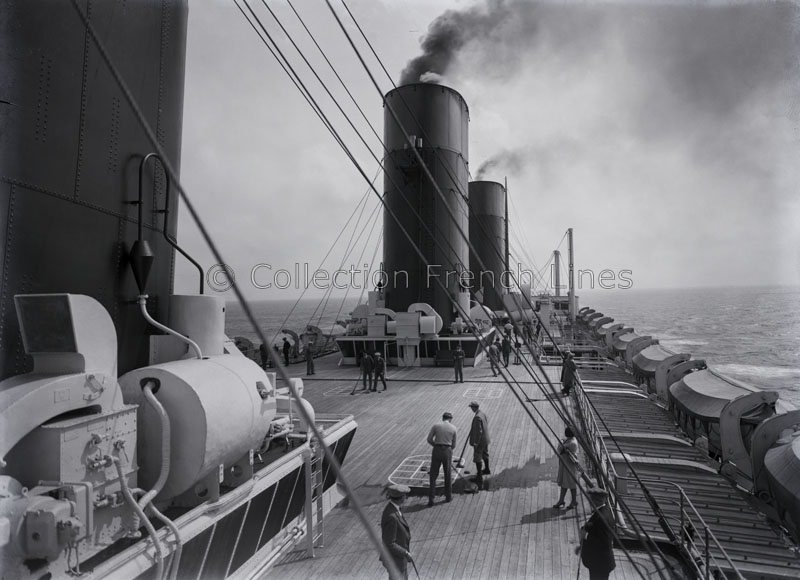
Anonymous. Deck on board the liner Ile-de-France (CGT 1927)
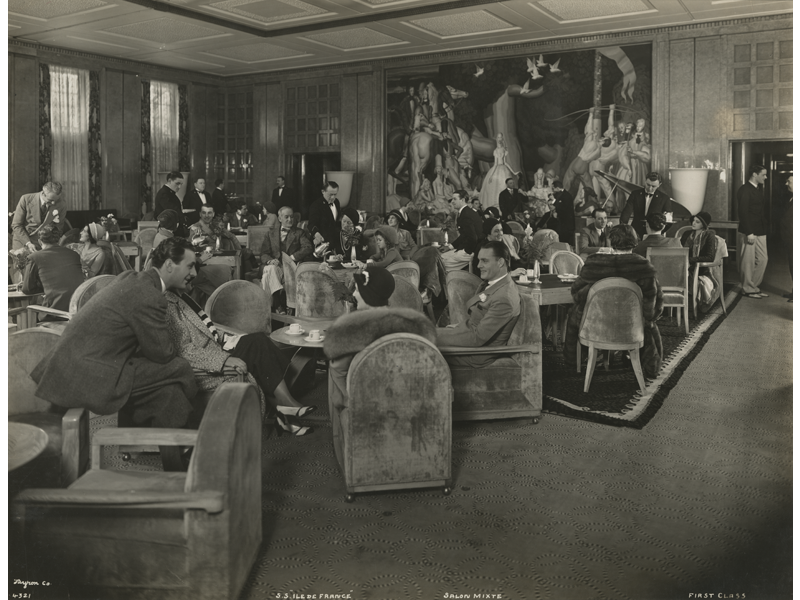
Byron Company. 1st-class salon mixte on board the liner Ile-de-France (CGT 1927)
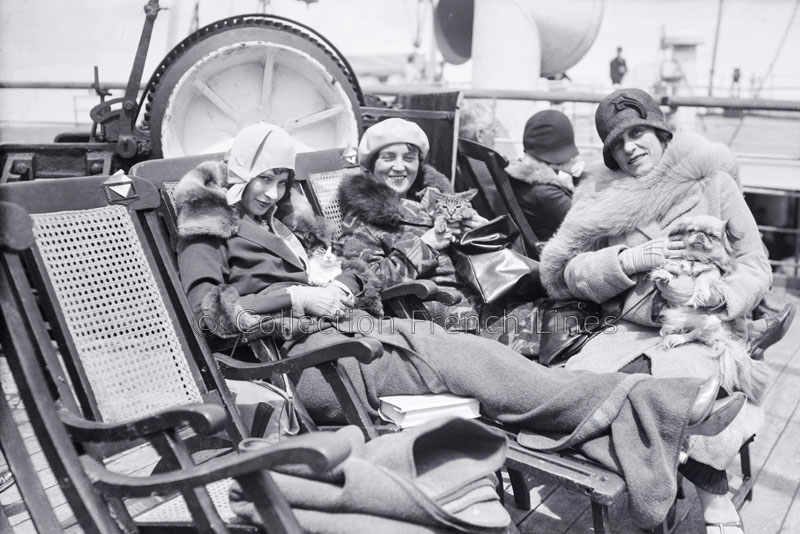
Anonymous. Passengers and their pets on board the deck of a French Line vessel
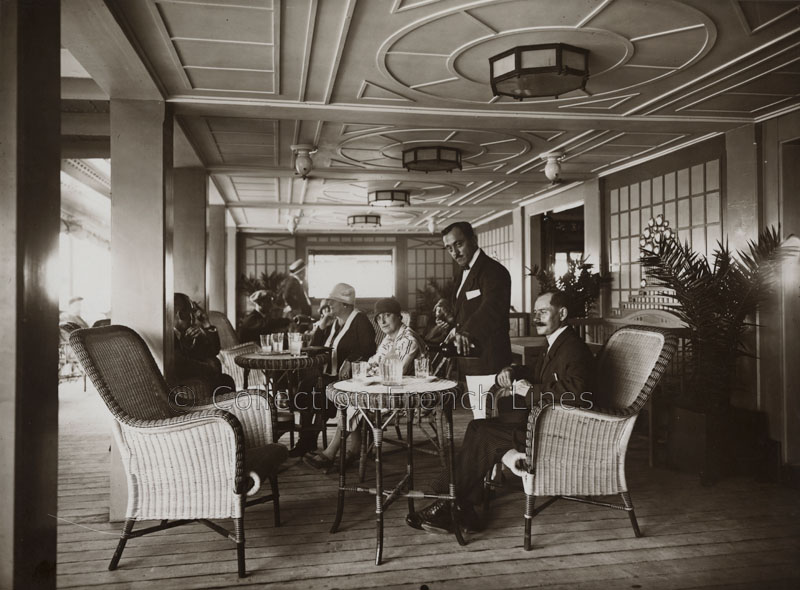
Anonymous. 1st-class smoking deck on board the liner D’Artagnan (MM 1925)
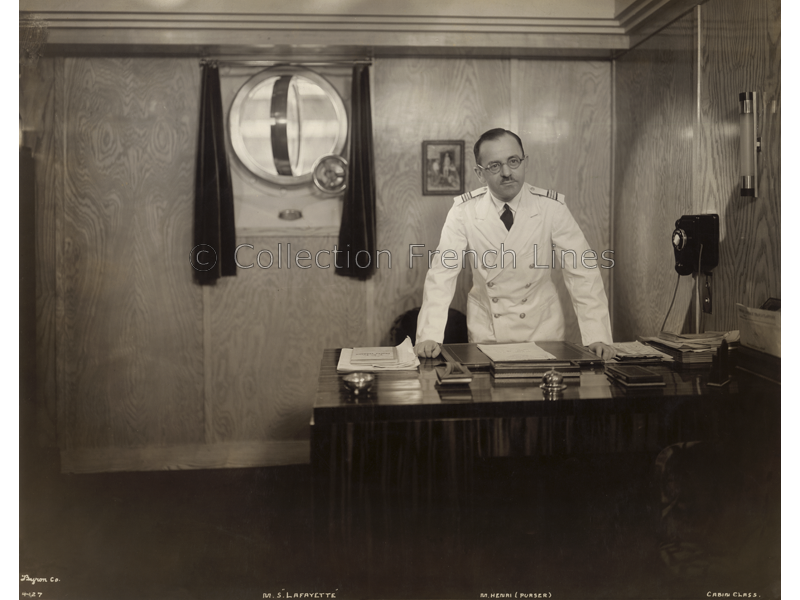
Byron Company. Mr. Henri, 1st-class steward on board the liner Lafayette (CGT 1930)
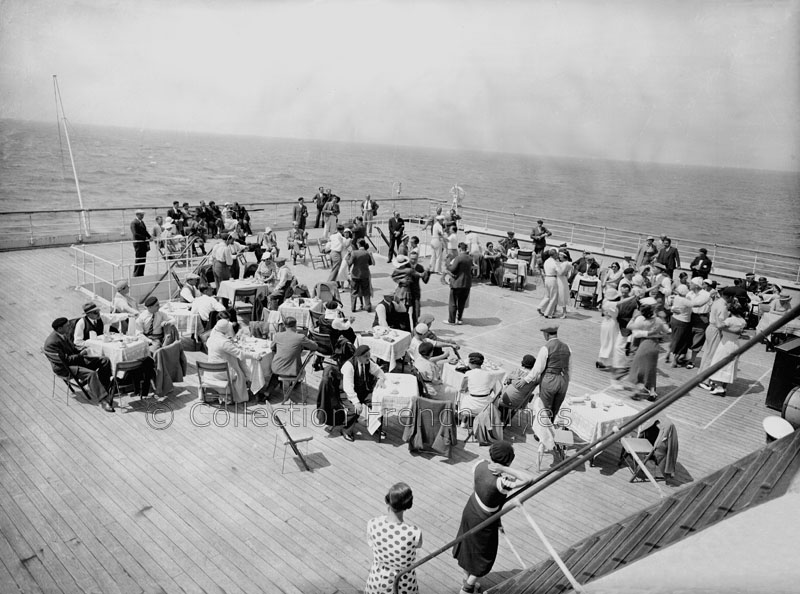
Anonymous. Passengers on board the 2nd-class deck of liner Ile-de-France (CGT 1927)
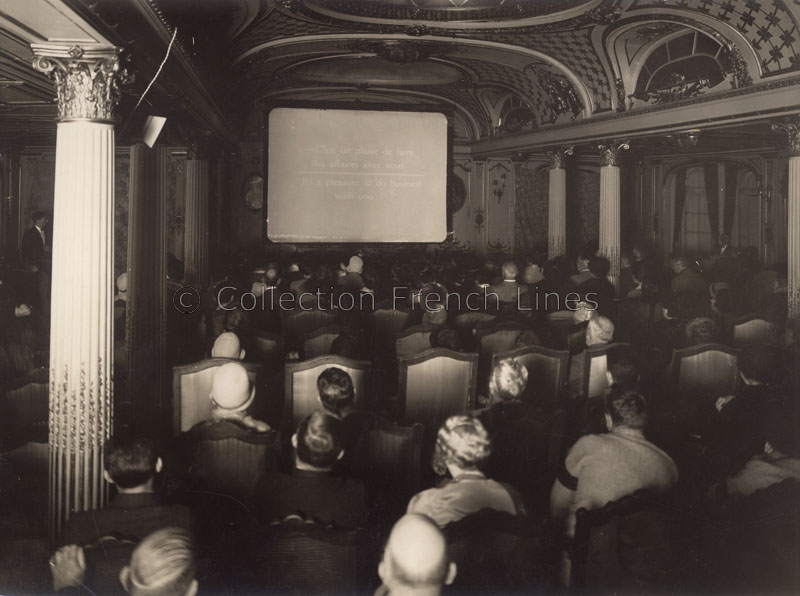
Anonymous. Film screening on board the liner France (CGT 1912)
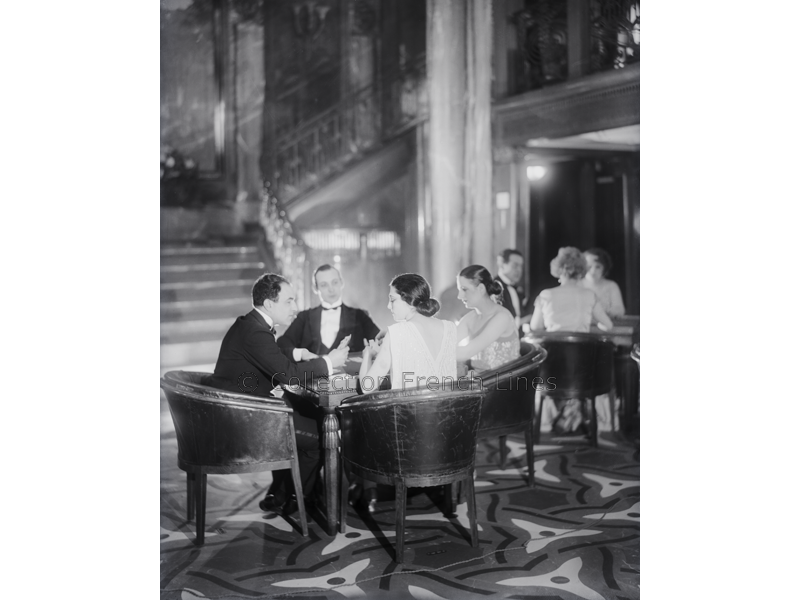
Anonymous. Passengers playing cards on board the liner Paris (CGT 1921)
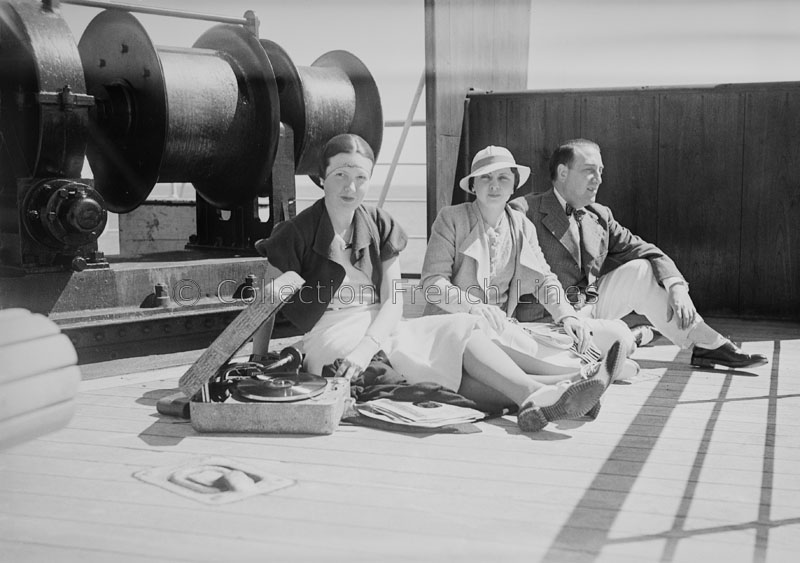
Anonymous. Passengers on the deck of a French Line vessel
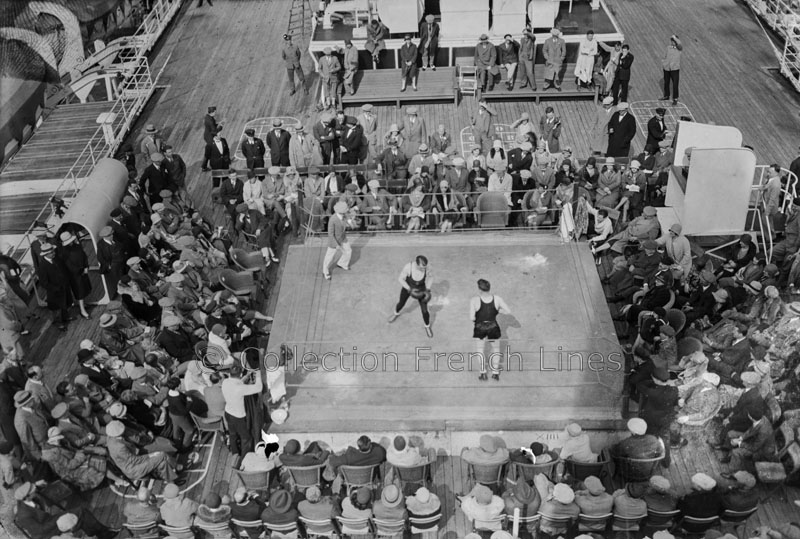
Anonymous. A boxing match on board the liner Ile-de-France (CGT 1927)
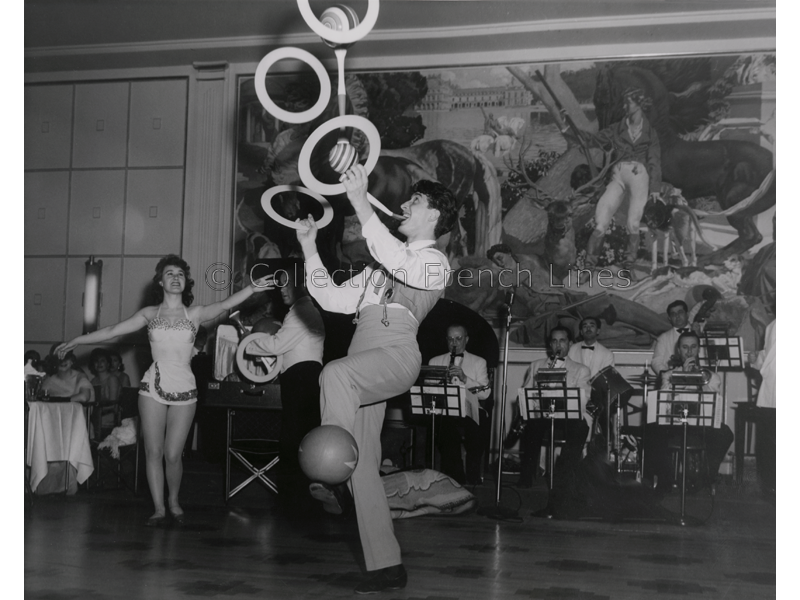
Yves Bizien. Performance in the main 1st-class lounge on board the liner Ile-de-France (CGT 1927)
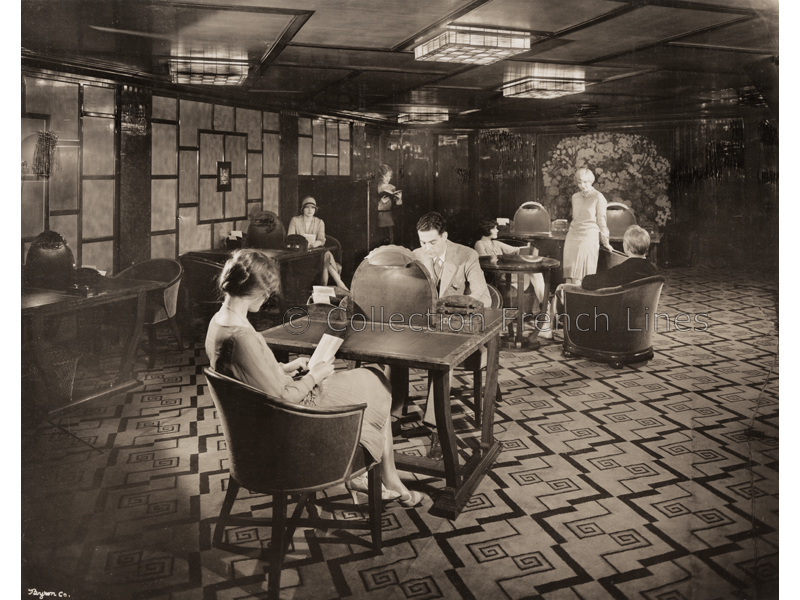
Byron Company. 1st-class reading room on board the liner Ile-de-France (CGT 1927)
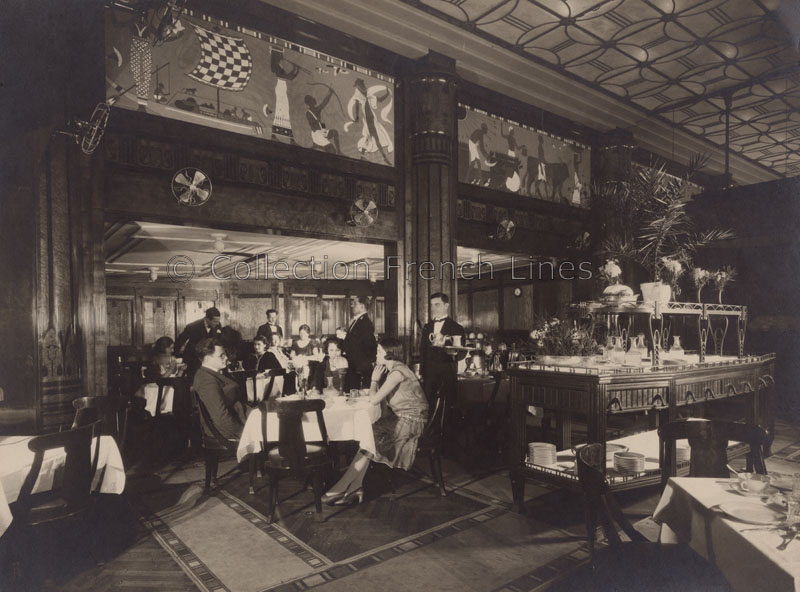
Anonymous.1st-class dining room on board the liner Mariette Pacha (MM 1926)
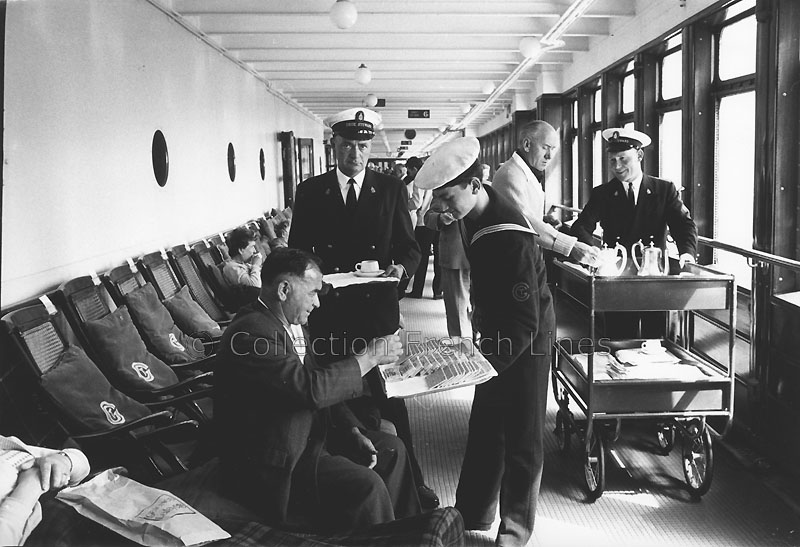
Raymond Augustin. Tea service on the covered promenade deck on the liner Liberté (CGT 1950)
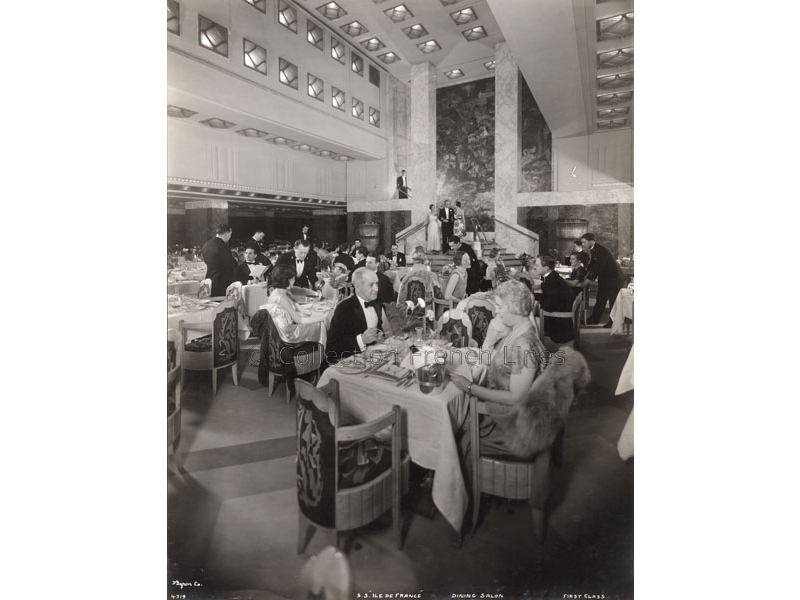
Byron Company. 1st-class dining room on board the liner Ile-de-France (CGT 1927)
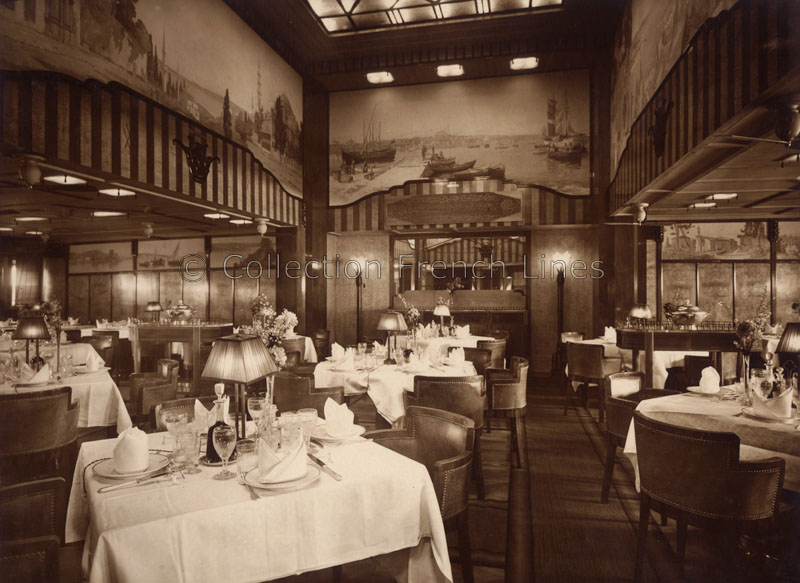
Anonymous. 1st-class dining room on board the liner Théophile Gautier (MM 1927)
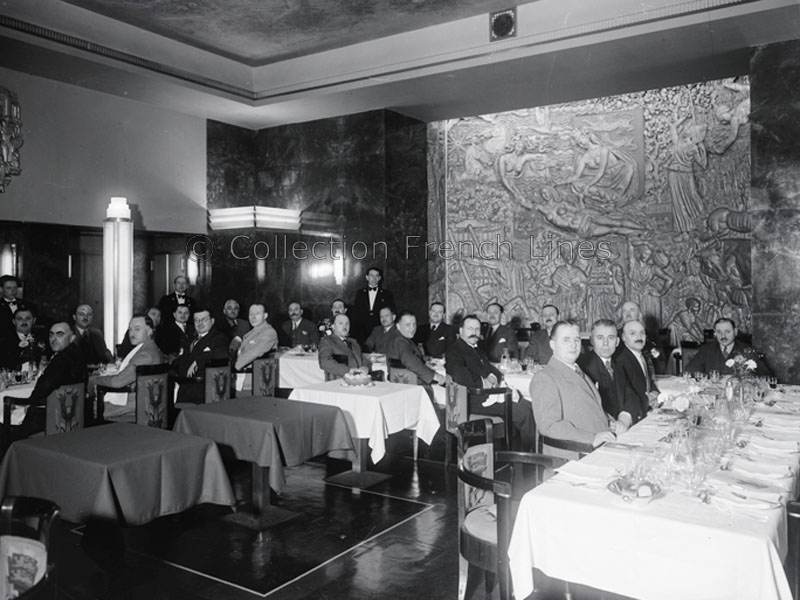
Anonymous. Banquet room on board the liner Normandie (CGT 1935)
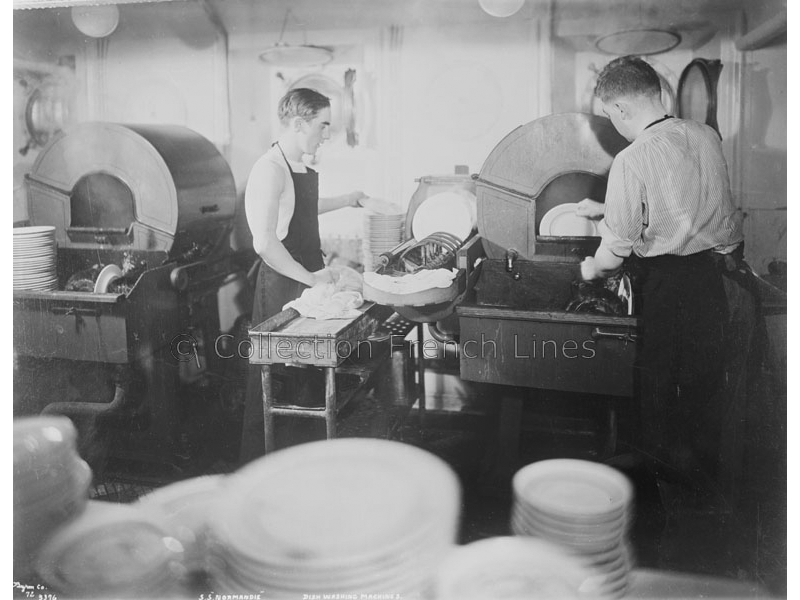
Byron Company. Washing dishes on board the liner Normandie (CGT 1935)
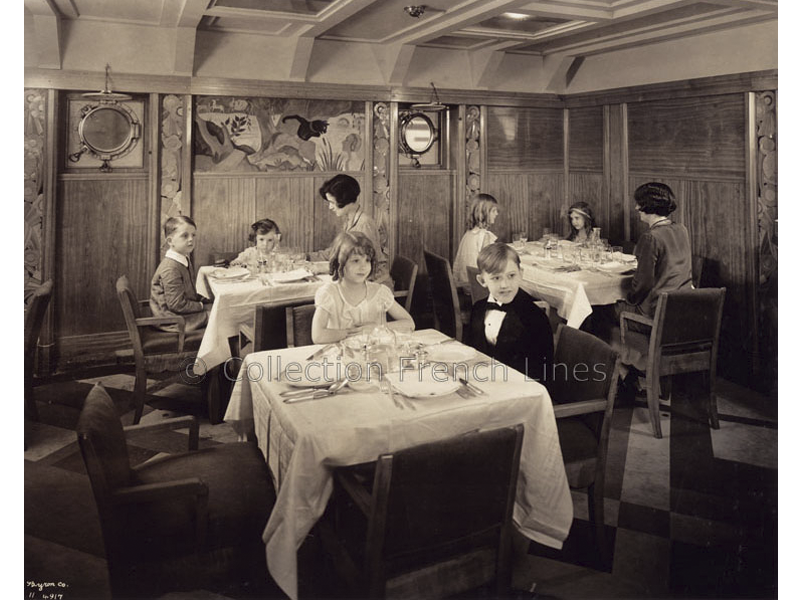
Byron Company. Children’s dining room on board the liner Ile-de-France (CGT 1927)
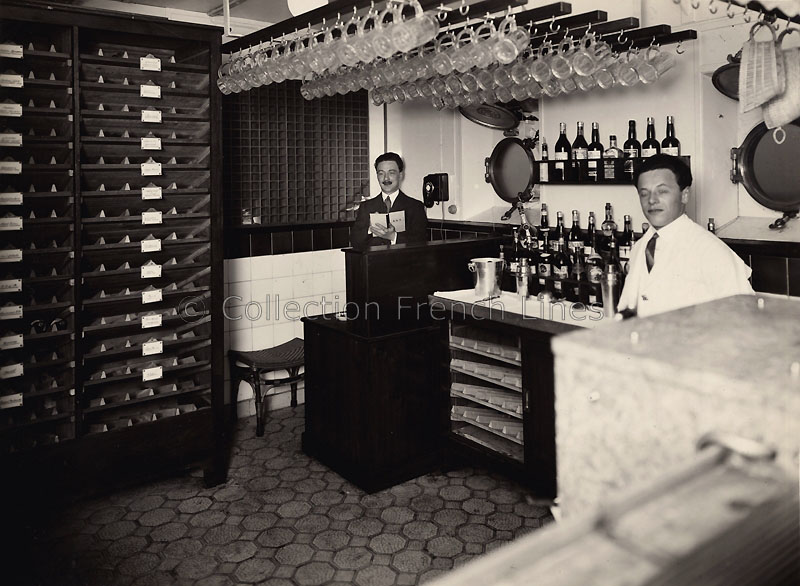
Anonymous. Wine cellar on board the liner Lafayette (CGT 1930) (Collection: Ms. Sabarly)
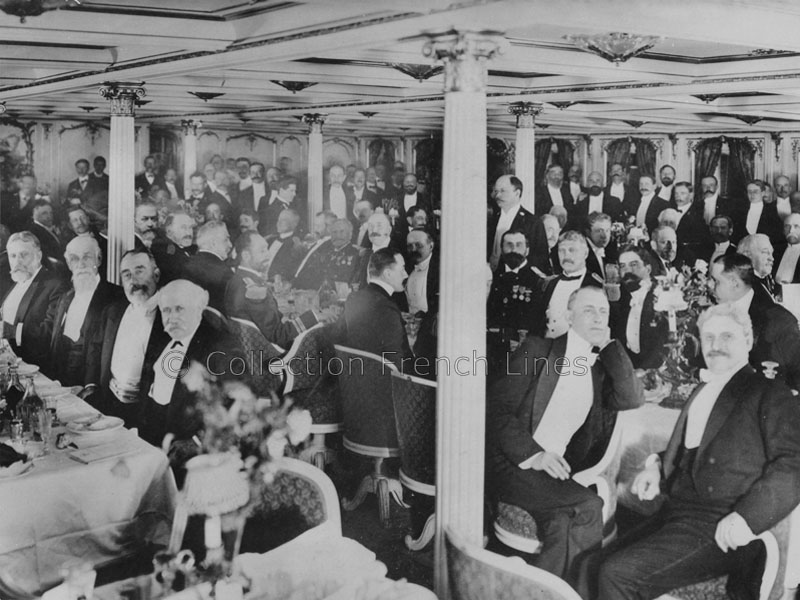
Anonymous. 1st-class dining room on board the liner La Provence (CGT 1906)
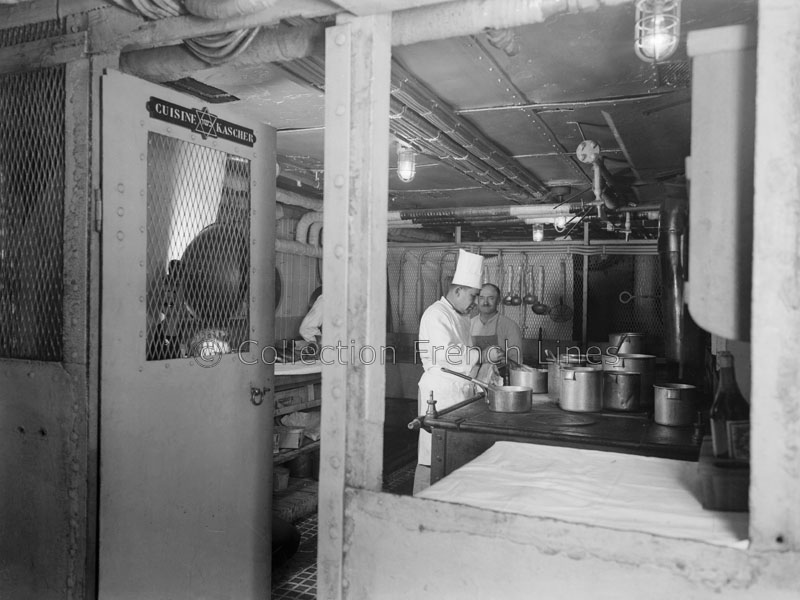
Anonymous. Kosher kitchen on board a French Line vessel
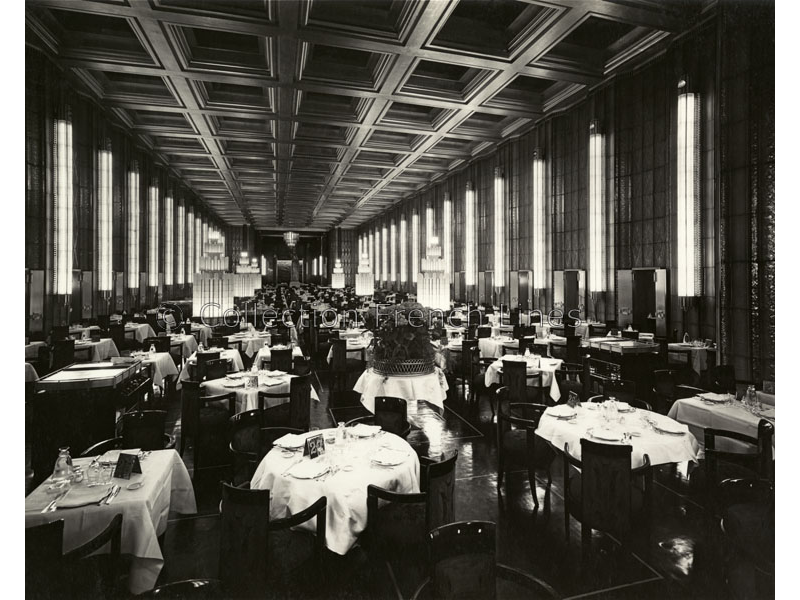
J. Desboutin. 1st-class dining room on board the liner Normandie (CGT 1935)
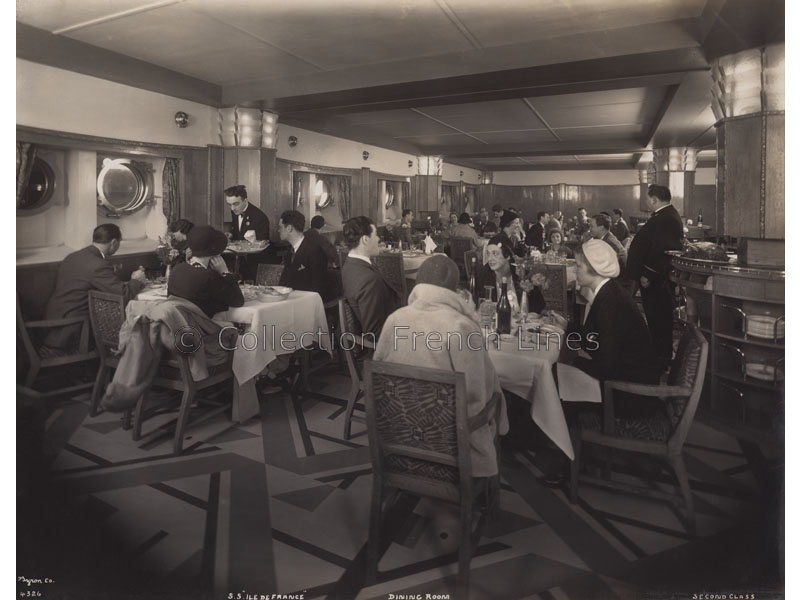
Byron Company. 2nd-class dining room on board the liner Ile-de-France (CGT 1927)
Cuisine
Gourmet cooking was a highly regarded specialty among French shipping companies and held a prominent place in life on board these vessels. From breakfast to dinner, including soup at 11:00 a.m. and late afternoon tea, the kitchen staff had to satisfy the appetite of every passenger. The refined cuisine that made French shipping lines famous, especially the French Line company, took pride of place in the luxurious dining rooms on board vessels. Popular gathering spots, these dining rooms allowed first-class passengers to see and, more importantly, to be seen.
Services On Board
Passengers could avail of a myriad of services on board the biggest vessels, which catered to all requests and dispelled any concerns. Manicurists, hairdressers and barbers were on hand to ensure that passengers looked their best and stood out during gala dinners. Parents could relax while their little ones were taken care of by nannies. Shipping companies even built special dining and games rooms for child passengers. The height of luxury, French Line did not forget pets. A dog kennel was available to passengers where dedicated staff made sure pets were walked every day. They even had a menu specially prepared by the chefs.
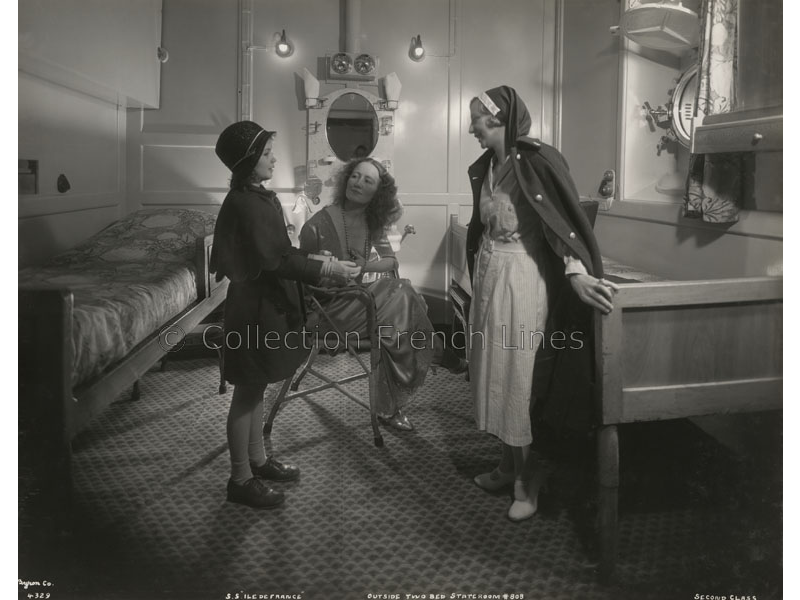
Byron Company. Passengers and nanny in a 2nd-class cabin on board the liner Ile-de-France (CGT 1927)
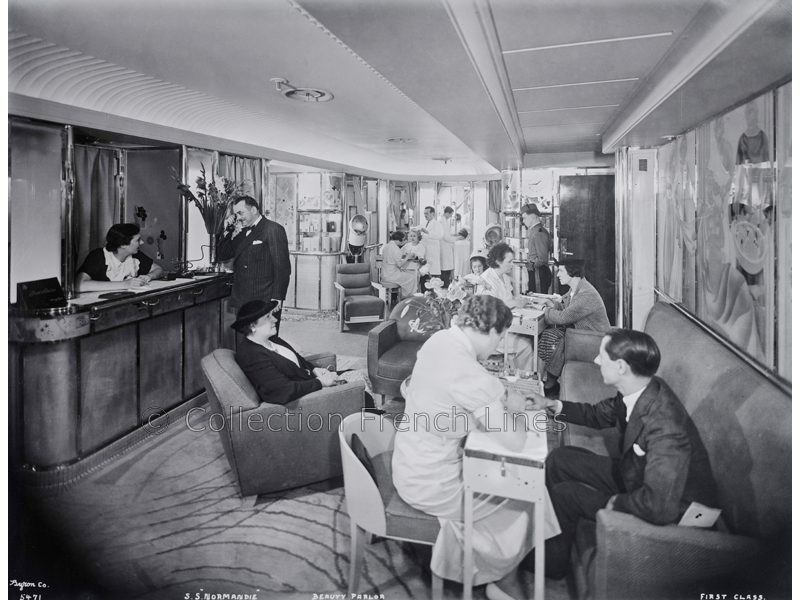
Byron Company. 1st-class beauty salon on board the liner Normandie (CGT 1935)
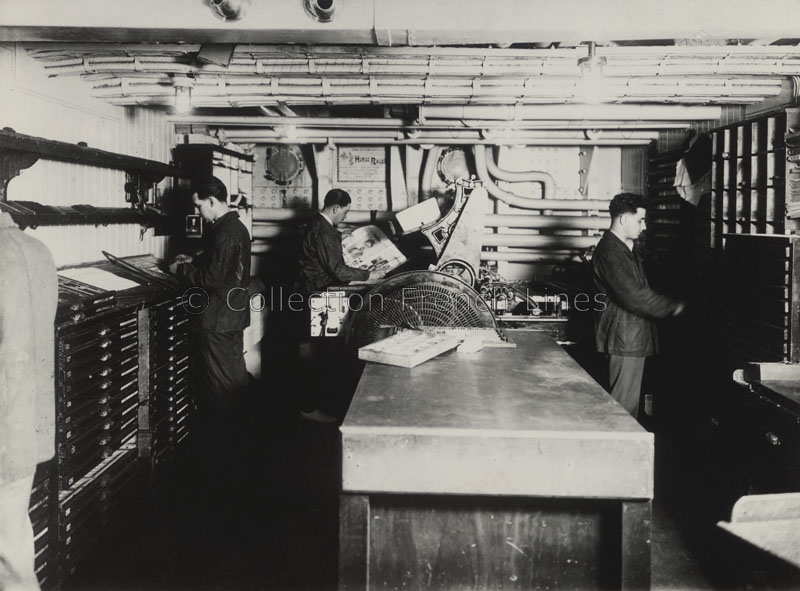
Anonymous. Printing press on board the liner Ile-de-France (CGT 1927)
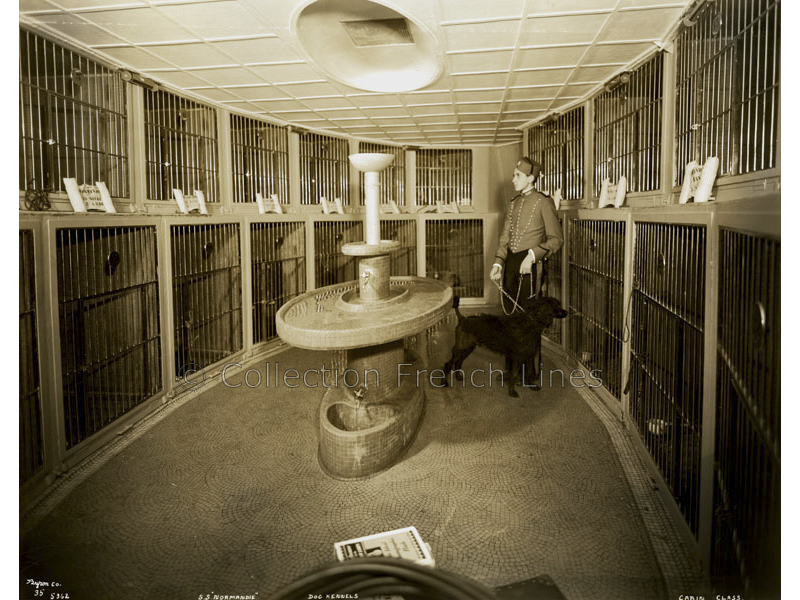
Byron Company. Kennels on board the liner Normandie (CGT 1935)
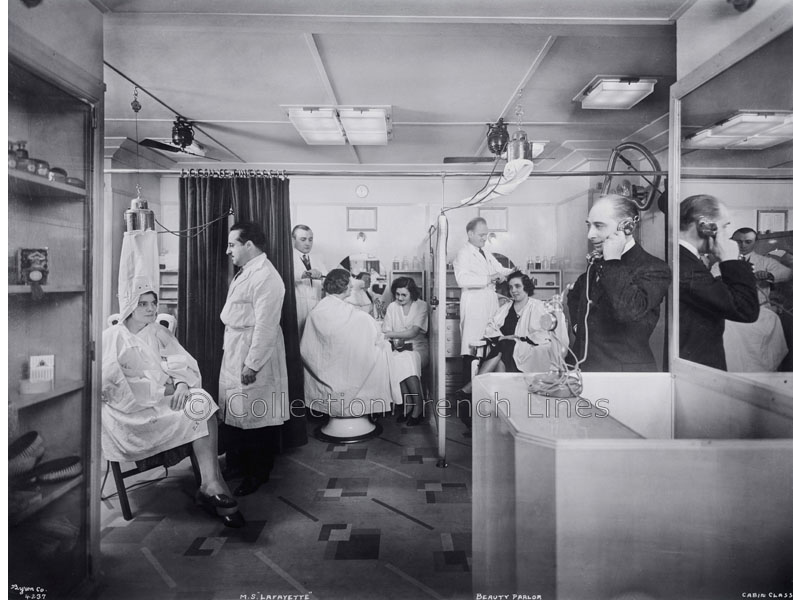
Byron Company. 1st-class beauty salon on board the liner Lafayette (CGT 1930)
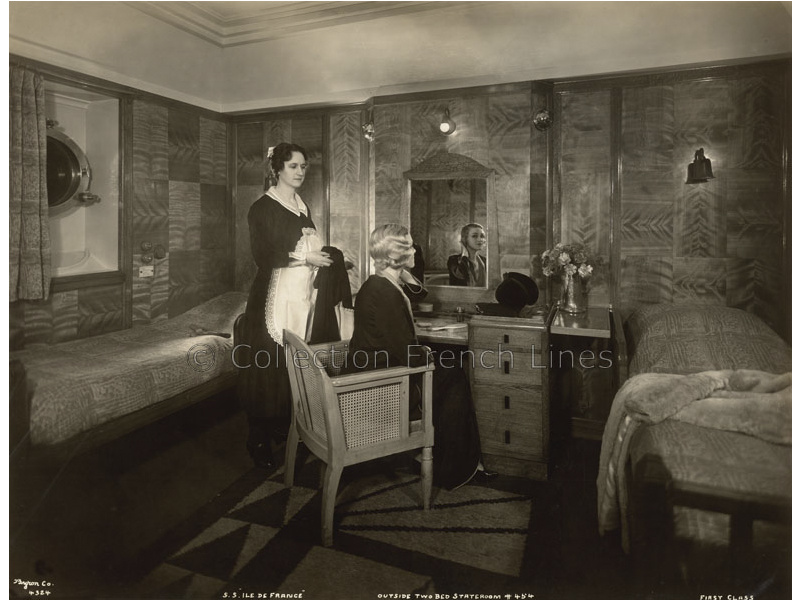
Byron Company. A passenger and maid in a cabin on board the liner Ile-de-France (CGT 1927)
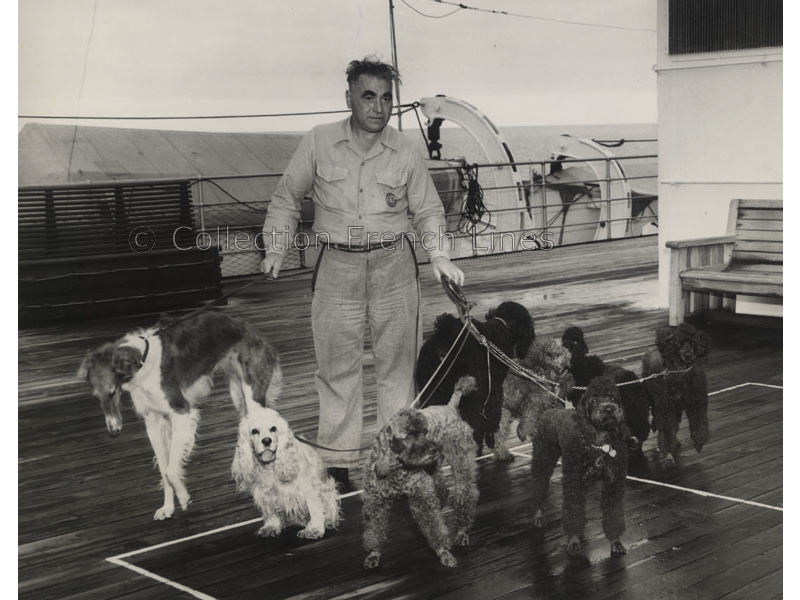
Yves Bizien. Walking dogs on board the liner Ile-de-France (CGT 1927)
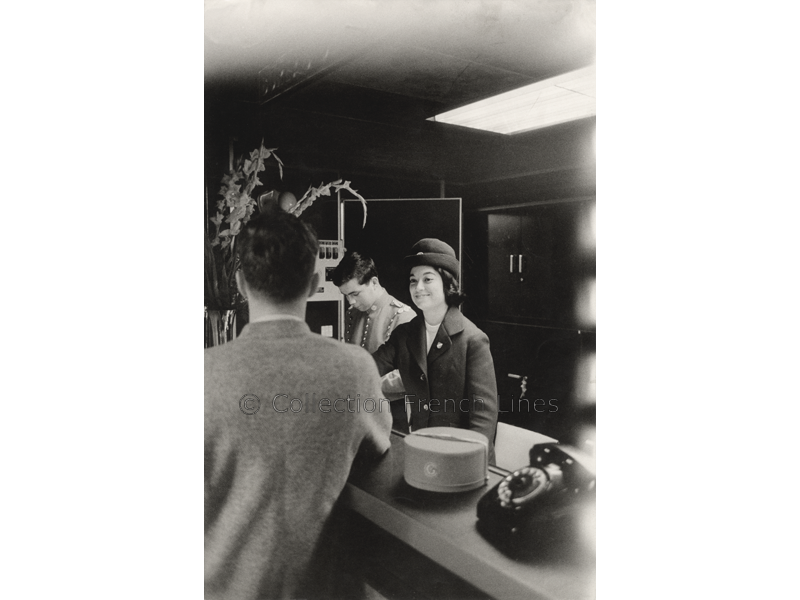
Anonymous. 1st-class luggage desk on board the liner France (CGT 1962)
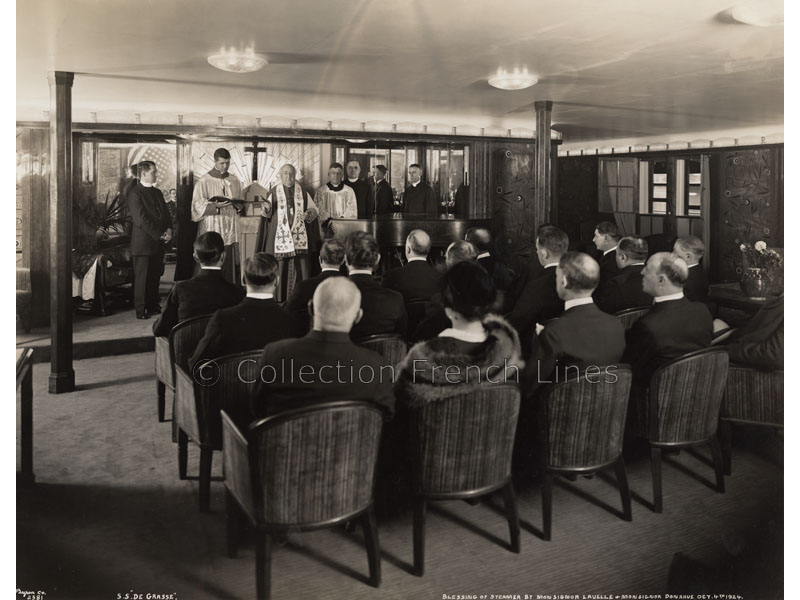
Byron Company. Church service on board the liner De Grasse (CGT 1924)
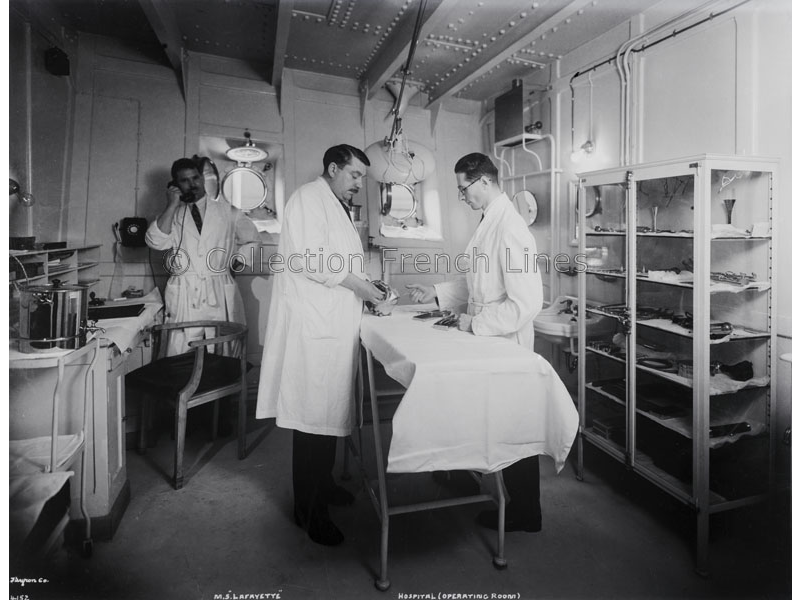
Byron Company. Operations room on board the liner Lafayette (CGT 1930)
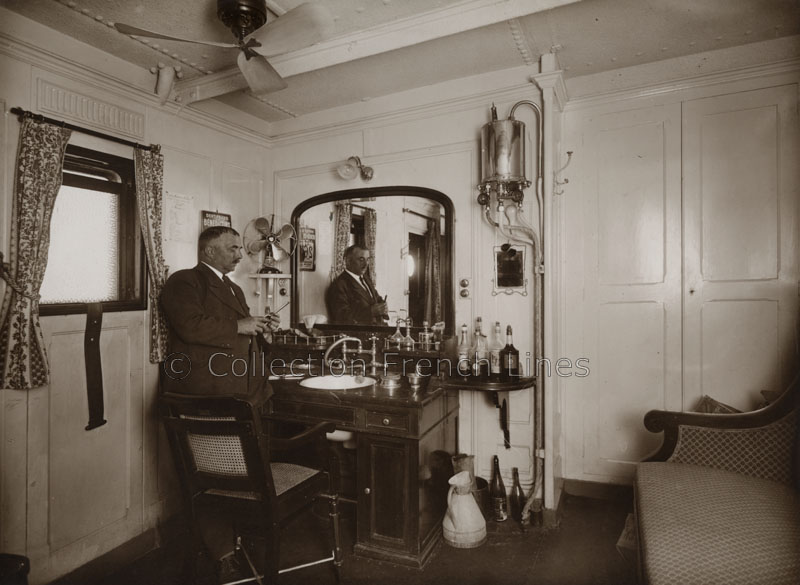
Anonymous. Hairdressing salon on board the liner Fontainebleau (MM 1924)
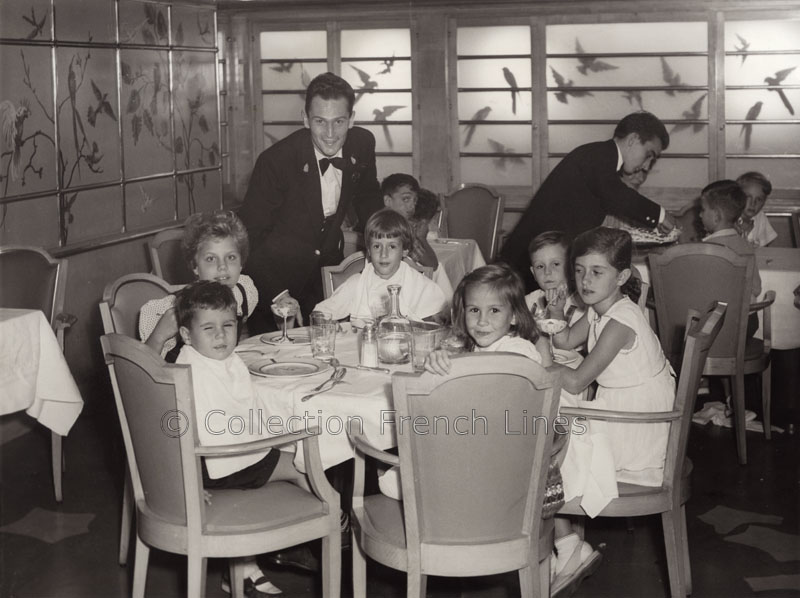
Anonymous. Children’s dining room on board the liner Antilles (CGT 1953)
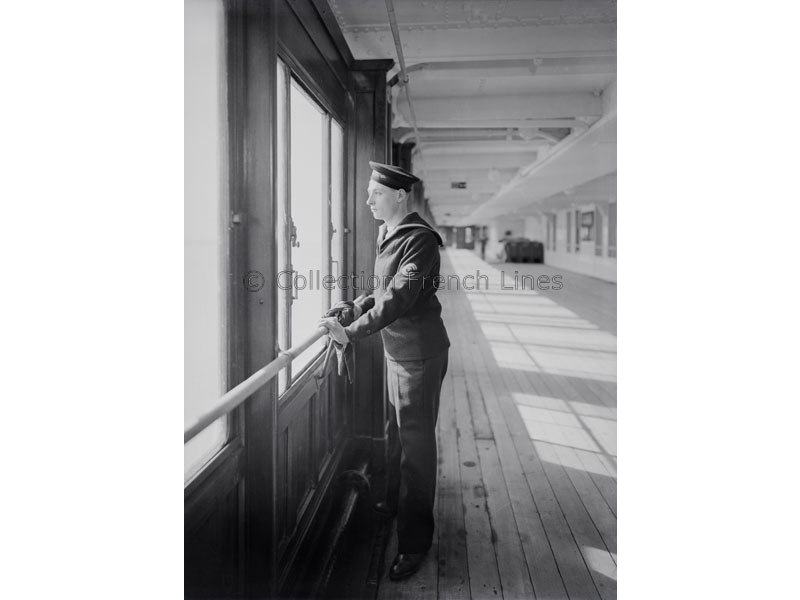
Anonymous. Apprentice sailor on the covered promenade deck of the liner Ile-de-France (CGT 1927)
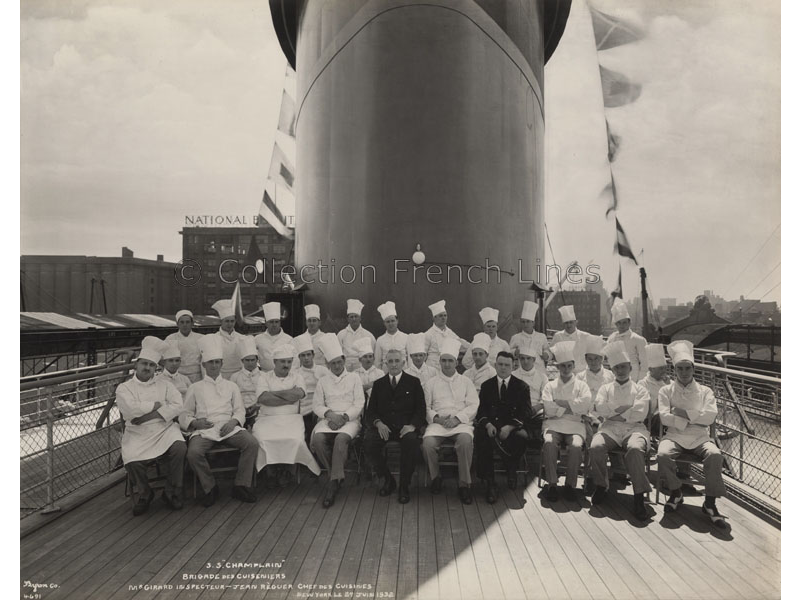
Byron Company. Kitchen staff on board the liner Champlain (CGT 1932), New York
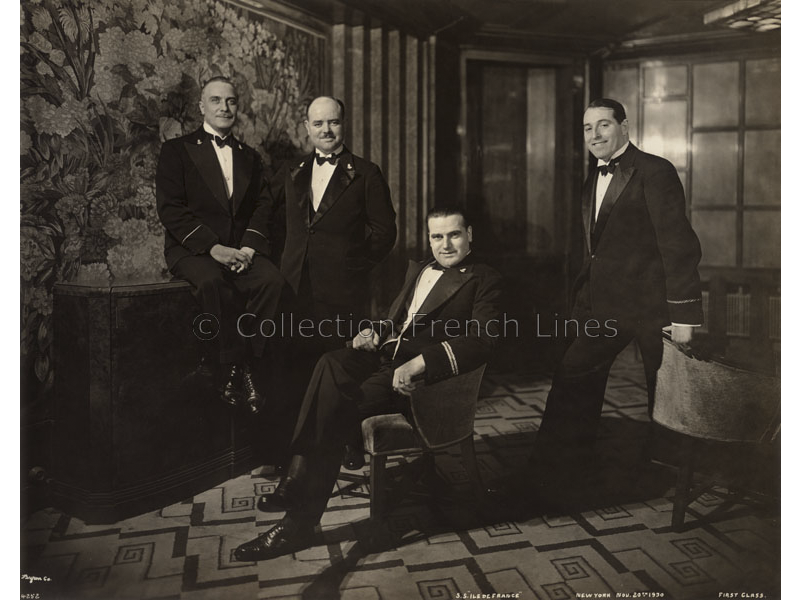
Byron Company. 1st-class civilian service staff on board the liner Ile-de-France (CGT 1927)
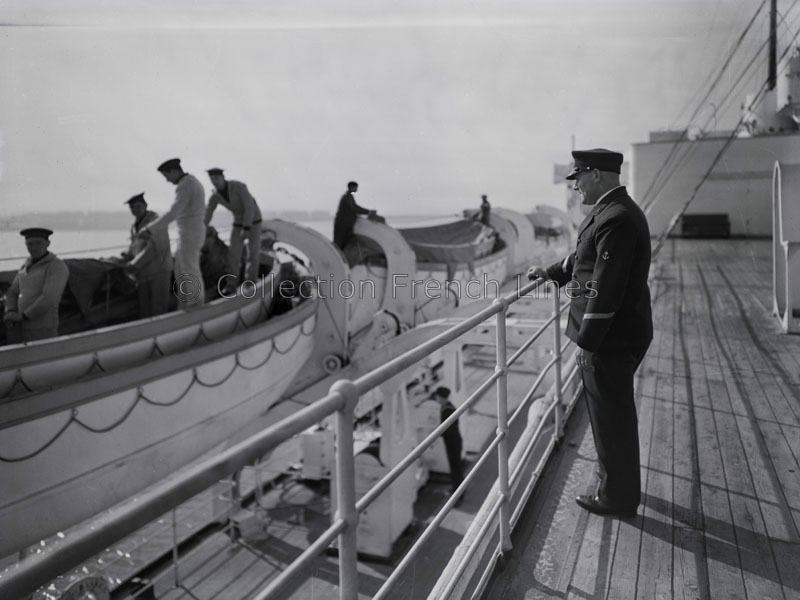
Anonymous. Lifeboat maintenance on board the liner Ile-de-France (CGT 1927)
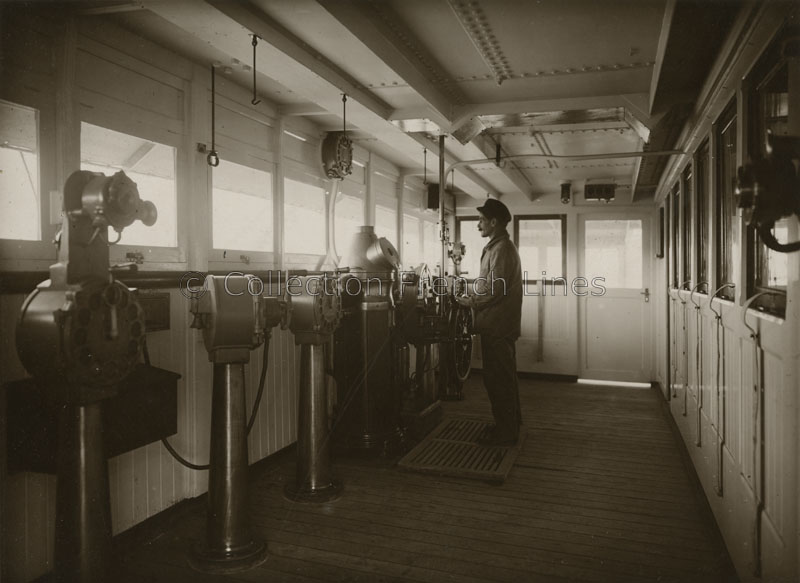
Anonymous. Helmsman on the bridge of the liner Leconte de Lisle (MM 1926)
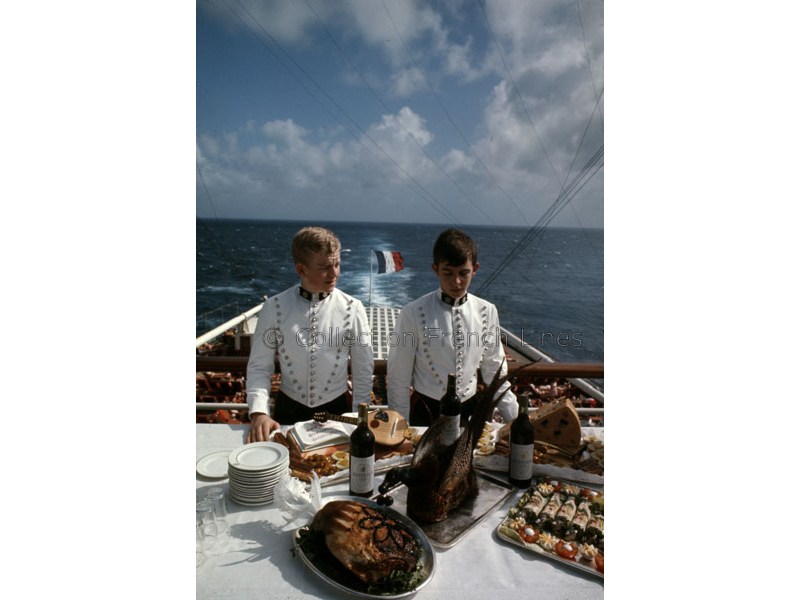
Anonymous. Buffet service offered by bellboys on board the liner France (CGT 1962)
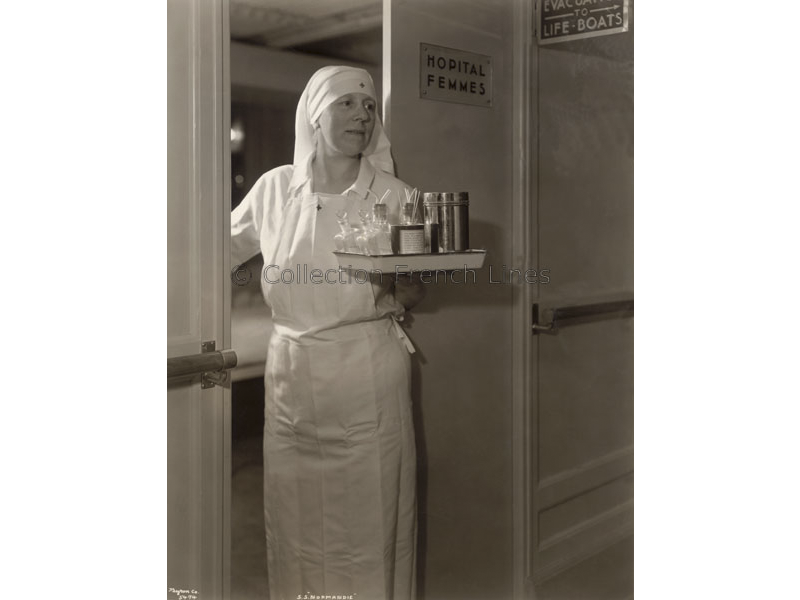
Byron Company. Nurse on board the liner Normandie (CGT 1935)
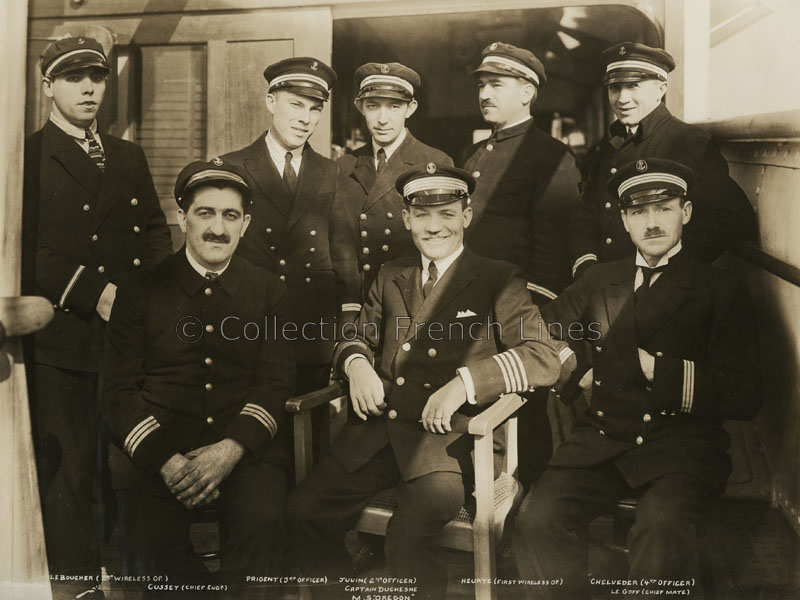
Byron Company. Staff on board the mixed cargo ship Oregon (CGT 1929)
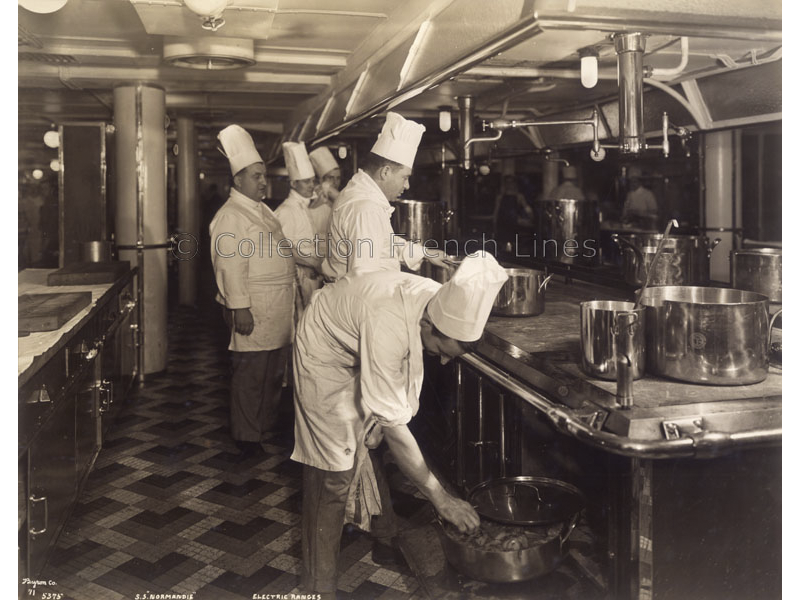
Byron Company. Chefs on board the liner Normandie (CGT 1935)
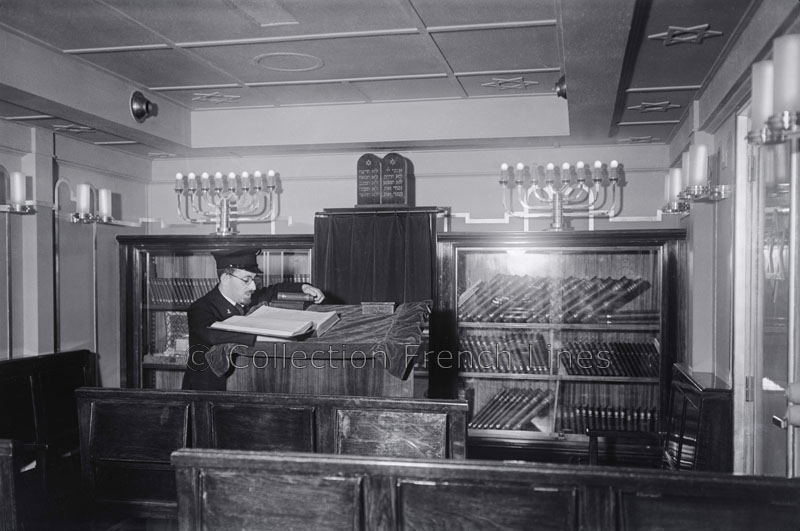
Anonymous. Synagogue on board the liner Normandie (CGT 1935)
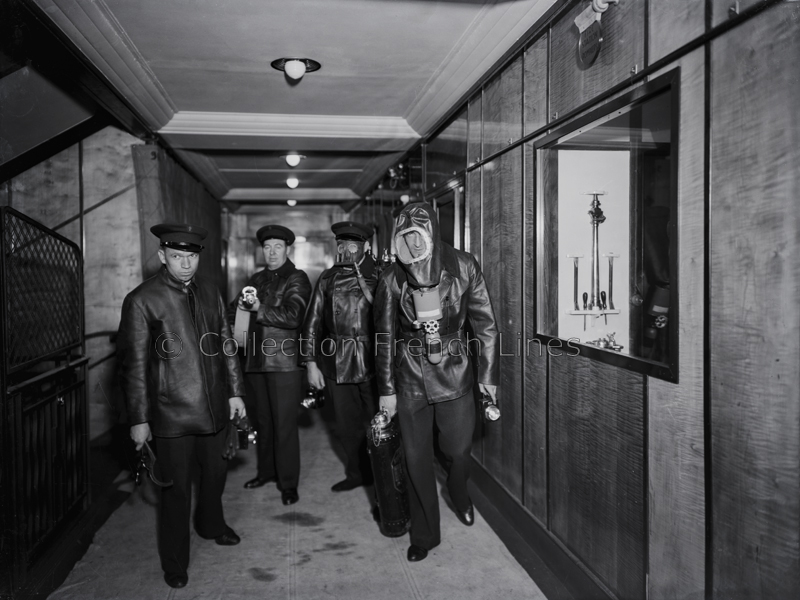
Anonymous. Firefighting team on board the liner Ile-de-France (1927)
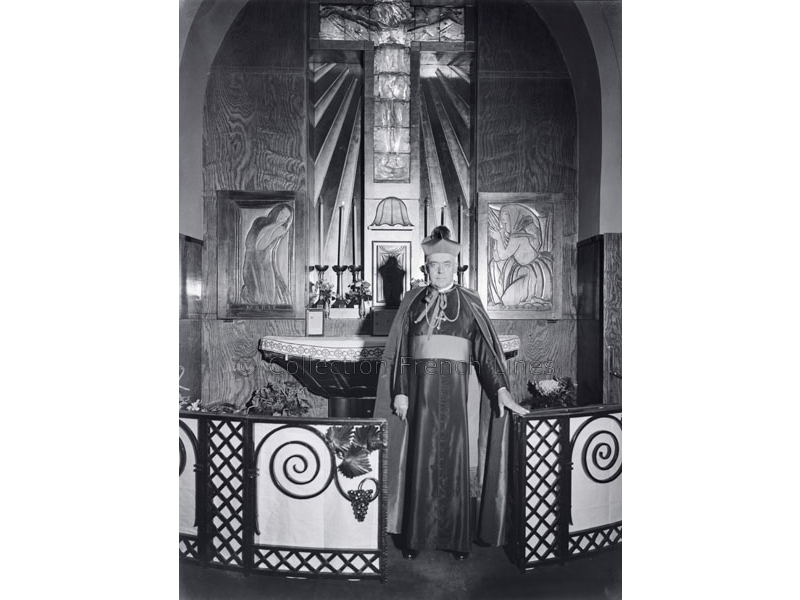
Anonymous. Priest in the chapel on board the liner Ile-de-France (CGT 1927)
Ship Staff
A commanding presence on board, the captain was an iconic and charismatic figure in the Merchant Navy who directed a team of highly qualified staff that carried out their duties within the various services. This included the deck and machinery department, which were essential to the smooth running of the vessel. The former controlled navigation, security and maintained facilities; while the latter was responsible for the ship’s propulsion and technical equipment. The “civil” or “general” service, under the guidance of the ship’s purser, catered to passengers and was in charge of on-board hospitality, ranging from kitchens to dining rooms, as well as the reception and cabin service. The medical department was present on every ship and looked after the health of the staff and passengers. In order to expand their services on board larger vessels, companies called on professional experts such as hairstylists, musicians, photographers, etc. Priests, rabbis and ministers were also requested to ensure that religious services continued on board.
Notable Passengers
Before the emergence of air transportation, shipping lines were essential for traveling between one continent and another. Political or religious figures, artists, singers, actors of all nationalities, etc. everyone traveled on French ocean liners, who were renowned for providing excellent service and high-end hospitality. A genuine rivalry developed between companies in order to attract this glamorous clientèle, whose status enhanced their exposure and reputation.
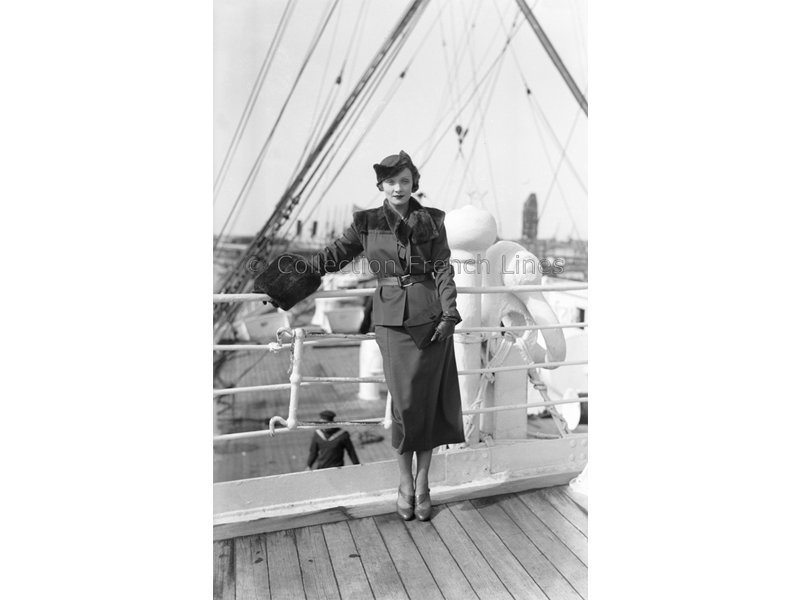
Anonymous. Marlene Dietrich on board the liner Paris (CGT 1921)
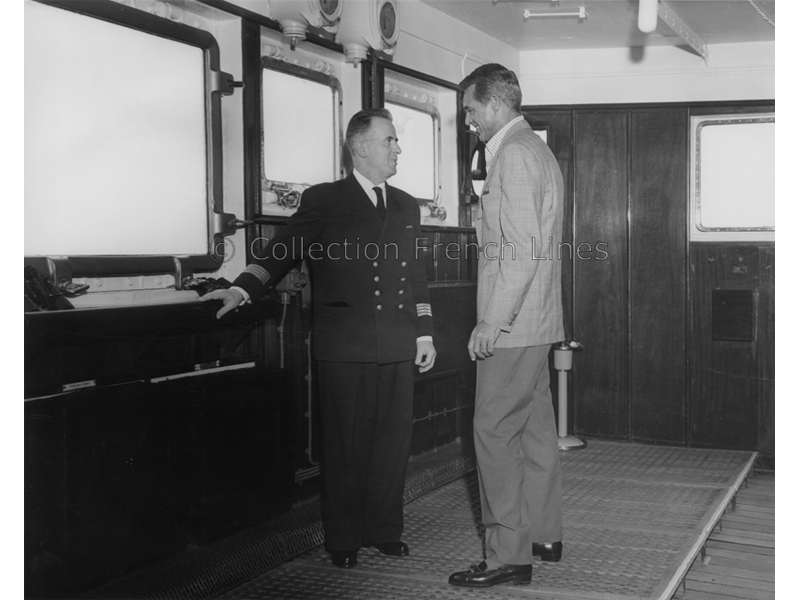
Yves Bizien. Cary Grant and Captain Le Berre on the bridge of the liner Ile-de-France (CGT 1927)
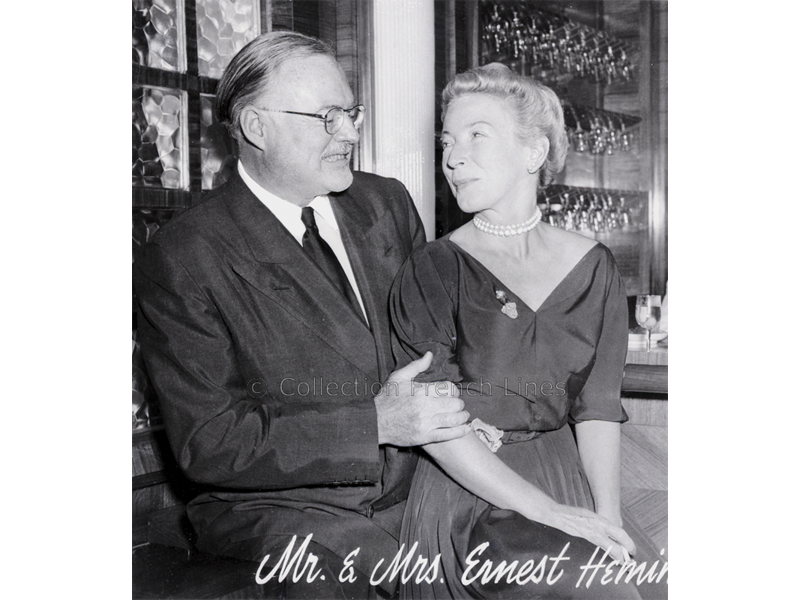
Anonymous. Ernest Hemingway and his wife on board a French Line vessel
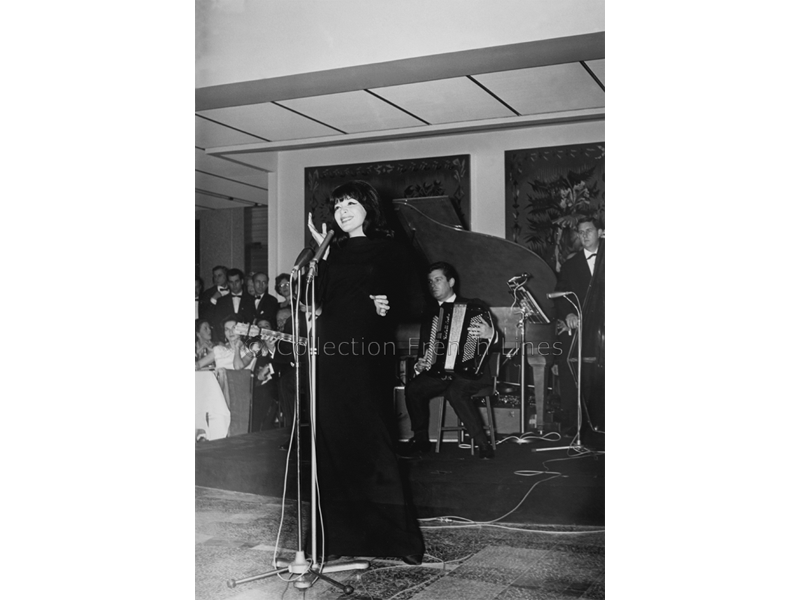
Anonymous. Juliette Gréco concert on board the liner France (CGT 1962)
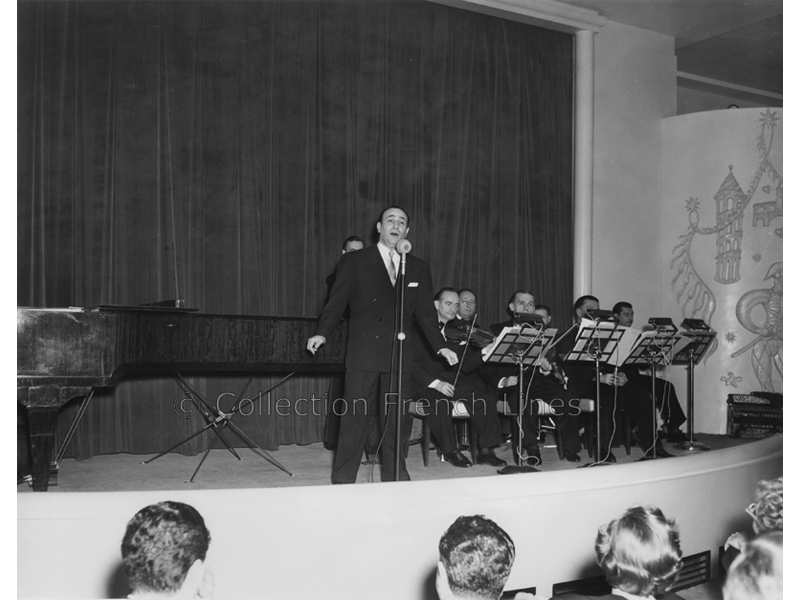
Anonymous. Tino Rossi concert on board the liner Ile-de-France (CGT 1927)
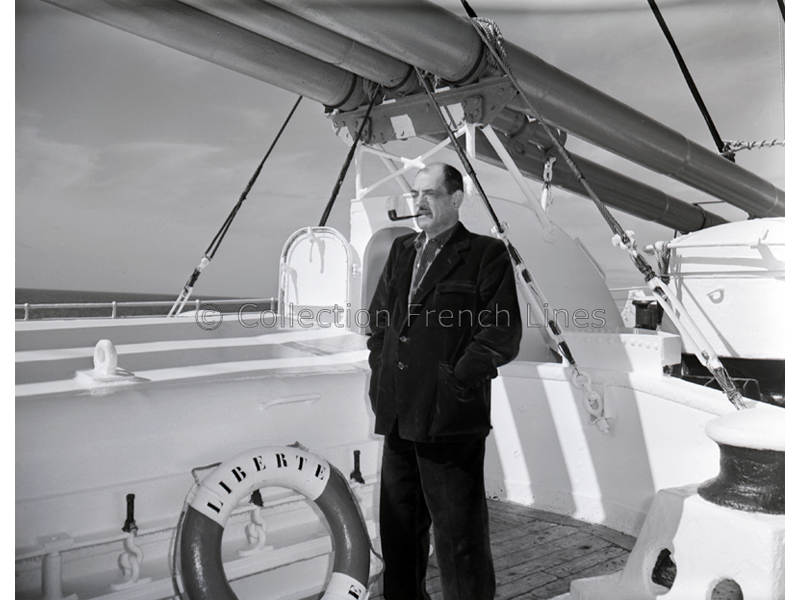
Anonymous. Luis Buñuel on board the liner Liberté (CGT 1950)
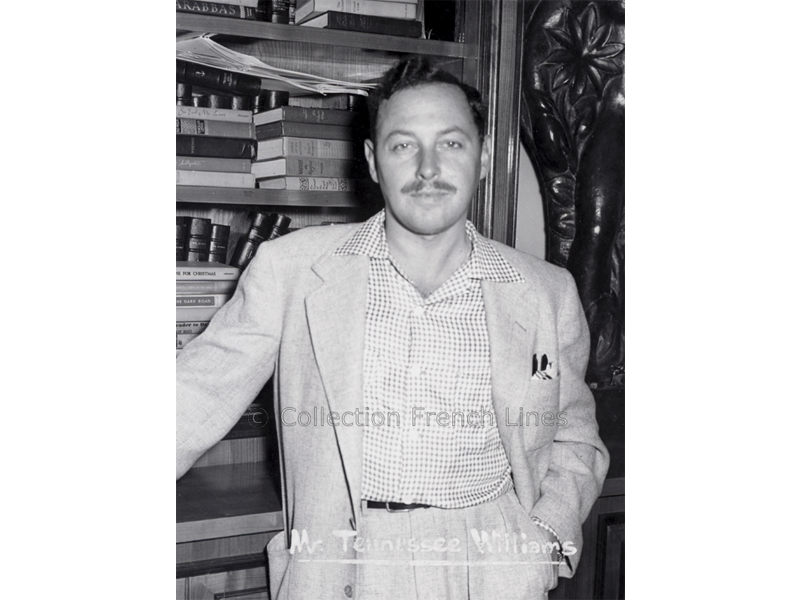
Anonymous. Tennessee Williams on board the liner Liberté (CGT 1950)
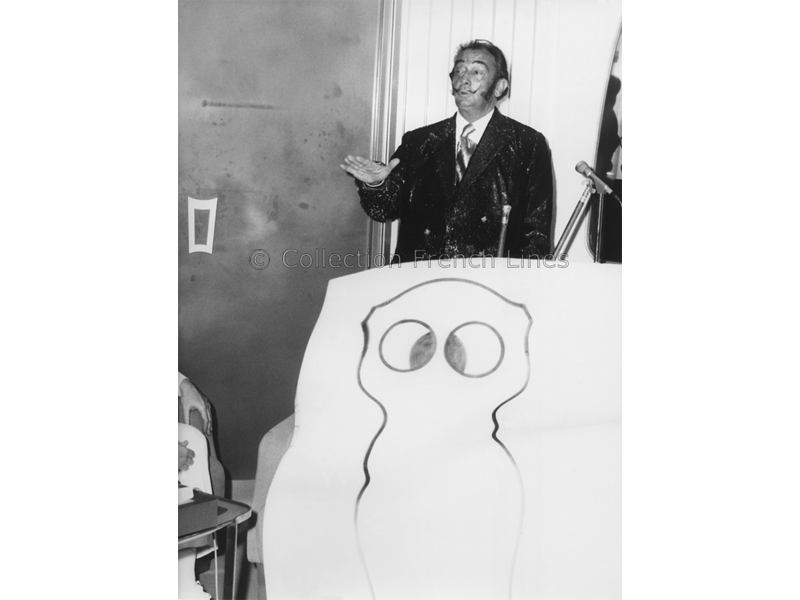
Anonymous. Salvador Dali on board the liner France (CGT 1962)
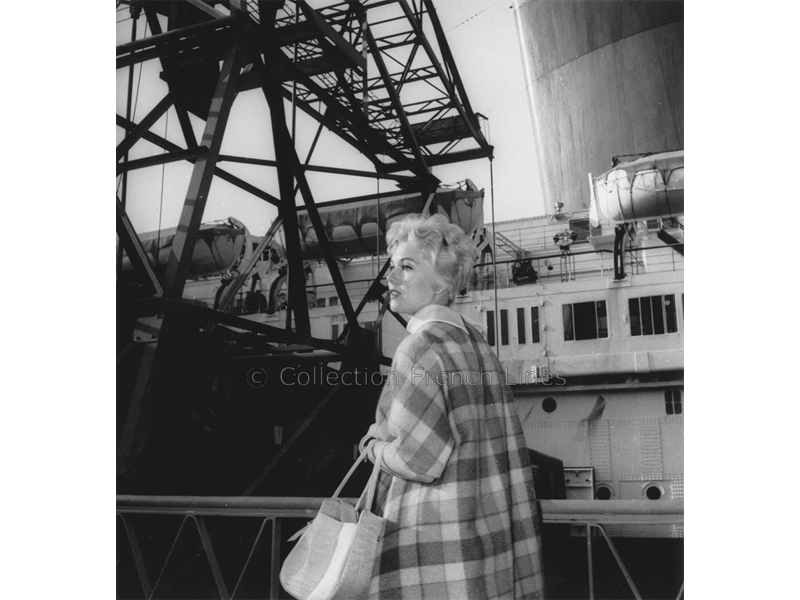
Anonymous. Kim Novak boarding the liner Ile-de-France (CGT 1927)
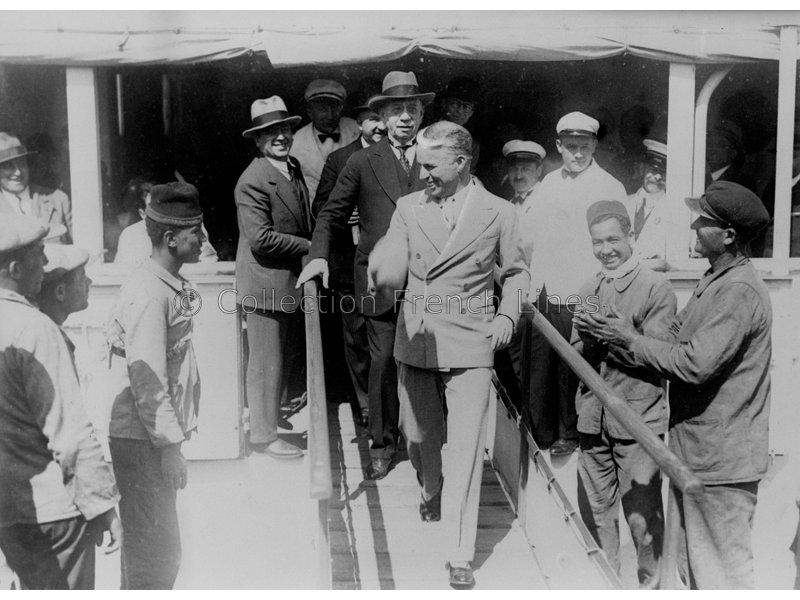
Anonymous. Charlie Chaplin exiting the liner Lamoricière (CGT 1921)
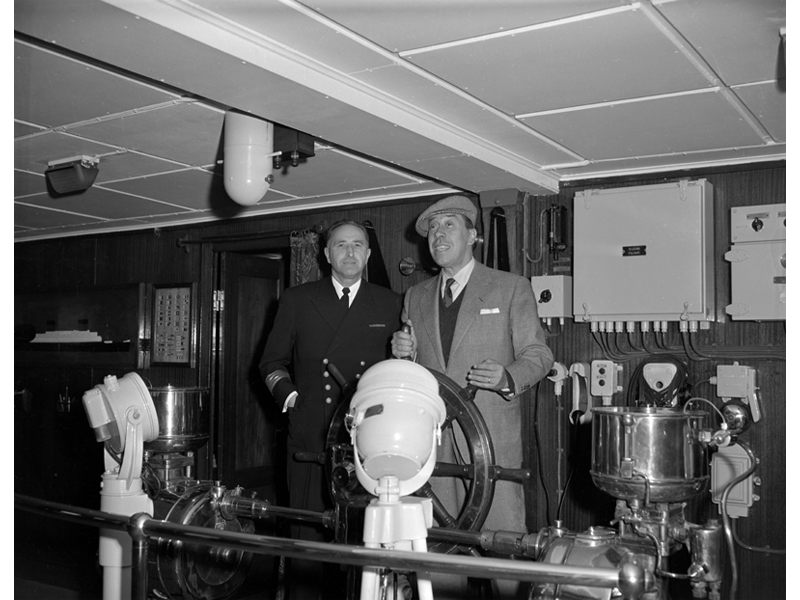
Anonymous. Fernandel at the helm of the liner Liberté (CGT 1950)
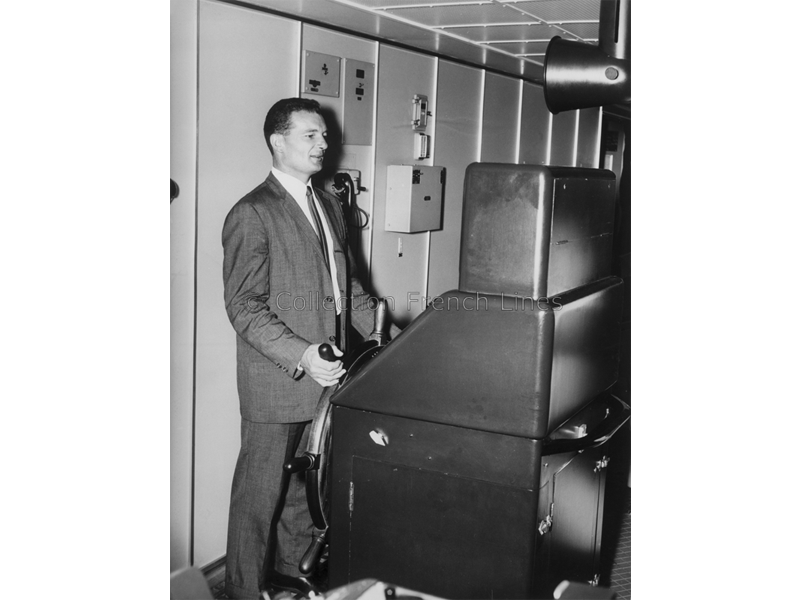
Anonymous. Éric Tabarly at the helm of the liner France (CGT 1962)
